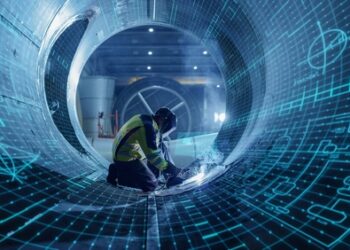The robustness and reliability of any network is built to meet the requirements of its users. The network of a home, a small business, a large conglomerate, and an airport or a telecom service provider are vastly different in their reliability requirements. They differ in terms of how much slack they can have in being non-operational. Any installation that falls into the category of mission critical can never be offline or switched off or non-operational since it plays an immensely important national or societal support role.
Power plants, oil refineries, airports, ports, railways, communication and Internet Service Providers, homeland security entry and exit points, amongst others, fall into this category. Of importance is the nature of the networking protocols used to keep such installations running and fully operational without any instance of failure.
A standard way to build operational robustness is to have an additional element of hardware available. So typically, a network may have parallel network cabling and fiber, duplicate power units, network switches, and so on. This is termed as bringing redundancy into the operational infrastructure. However, other than the hardware side, networking relies on protocols, topology, and architecture. So, it is more meaningful to use these elements to build redundancy than just rely on hardware alone. In general, the most effective way to bring redundancy into a network, is to design it in such a way, that it can rebuild itself in the shortest possible time, whenever there is a failure.
All redundant networking models work on the same principals. There is a main root for data traffic and a redundant root as a backup. In the event of a failure in the main root, traffic switches to the redundant root. The fraction of time taken to switch over from the main root, to the redundant root, and the number of network packets lost or no packets lost, determines whether the network architecture is suitable for a mission critical infrastructure or not.
The earliest redundant network architecture to be developed in the nineties was the Spanning Tree Protocol (STP). However, due to the excessive time lag required to recover from a failure, it was replaced by various superior versions including the Rapid Spanning Tree Protocol (RSTP) and Multiple Spanning Tree Protocol (MSTP). While the time lag required to recover from a failure was reduced it was still too high to be applied to mission critical infrastructures.
Moreover, the exact time lag to recover from a failure in any of these architectures proved to be variable, depending on the position of the failed link in the network, and the number of switches in the network. It was for this reason, that neither STP, nor RTSP, nor MSTP protocols, proved to be suitable for mission critical network infrastructures and further innovation was required. The ideal network protocol for mission critical infrastructures is therefore zero network reconfiguration time, and no data packet loss.
The protocols that meet modern day requirements for mission critical infrastructures are High-Availability and Seamless Redundancy, HSR and Parallel Redundancy Protocol, PRP. These two protocols use the same approach to support a modern-day, mission critical network infrastructure. These protocols create duplicate packet networks and send them across different paths to meet at the same destination simultaneously.
Moreover, the duplicate packet networks are created continuously without waiting for failure to take place at any time. Hence their mean time to react to failure is nil, since there is always a functional, redundant and active path to reach the final destination. PRP uses parallel network paths to build redundancy and HSR uses a network ring topology to build redundancy.
With the growing digitisation of industrial networks, and the convergence of operational and IP networks, there is increasing focus now on the reliability of Ethernet switch-based networks supporting mission critical infrastructures. Whether smart grids for power distribution, autonomous traffic systems, smart city sub-systems, aviation and road and sea hub and spoke arrangements, hospitals, government support centers, commercial data centers, all rely now on redundant and highly reliable network systems. These can only be provided by architectures using HSR and PRP networking protocols










Discussion about this post